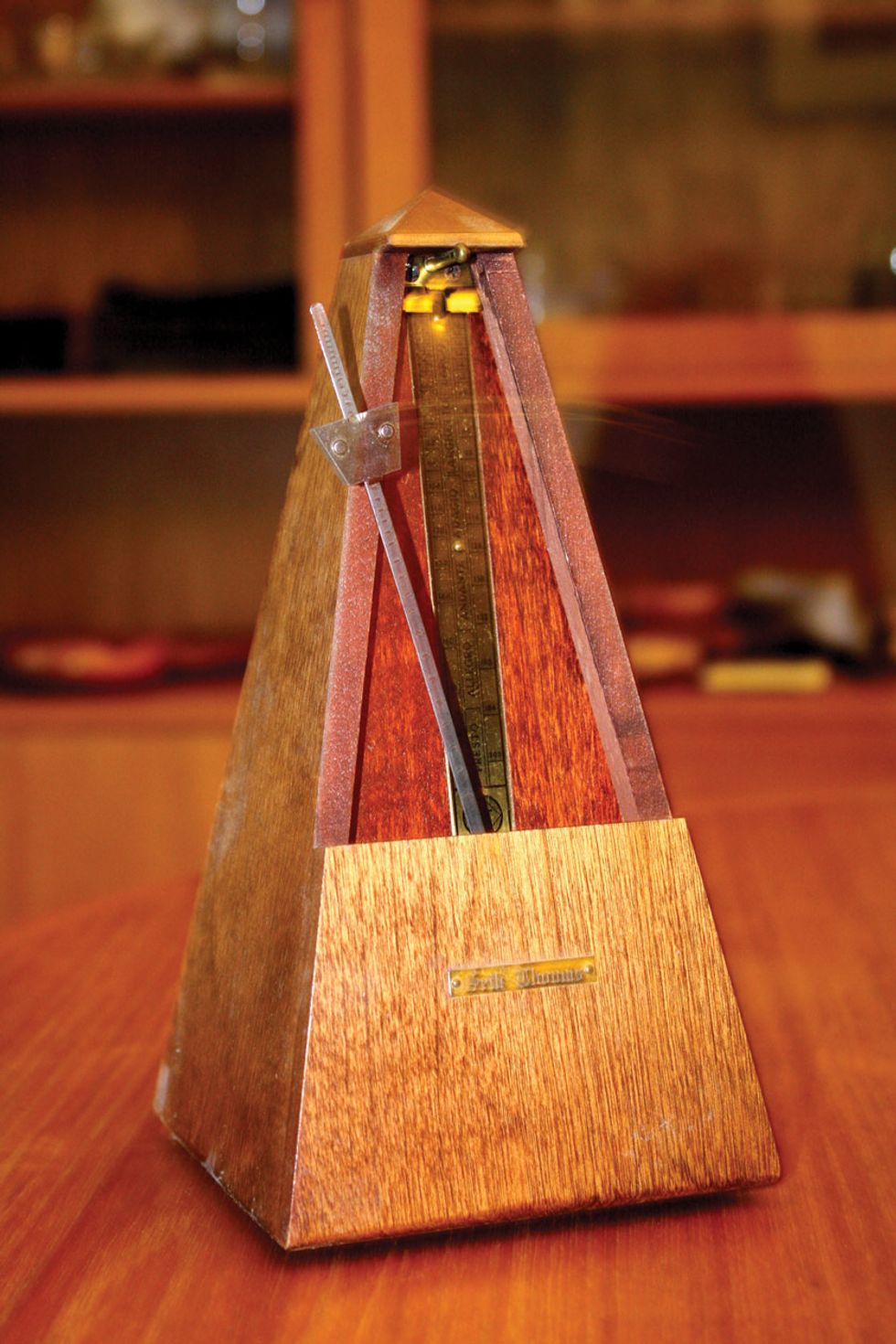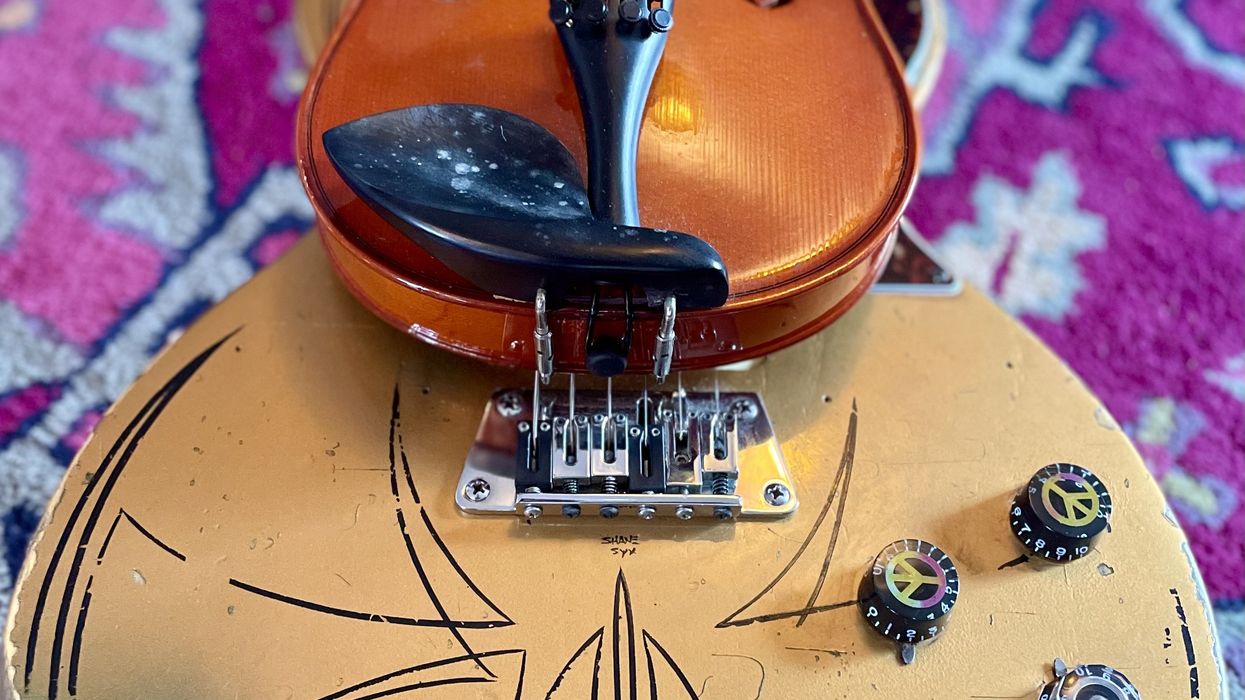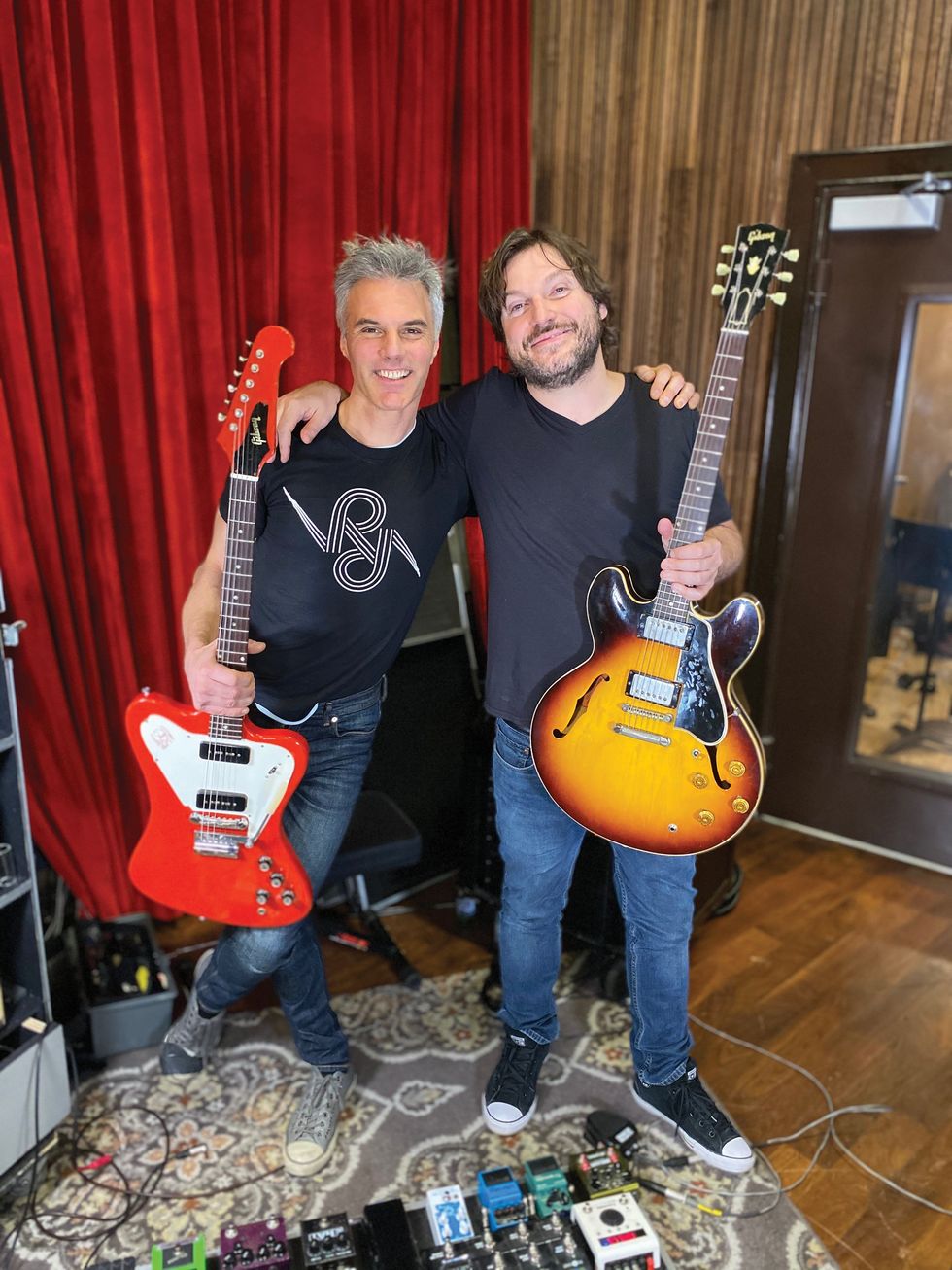I spent two years taking piano lessons before I started playing bass. And I spent my first 10 years on bass slaving over a cassette deck or a record player to learn parts. All those years represent invaluable time spent in shaping the player I am today, and it left me with a great library of songs, but it wasn’t quite the right approach. That’s because I didn’t involve a metronome enough.
Fast-forward to my first real bass education in Minneapolis, Minnesota. While in college there, I exceled in ear-training class. Hearing intervals and even picking out single notes within a chord was easy for me, and I think that’s due in part to growing up in Scandinavia. Whether we’re talking about old Swedish folk music, ABBA, or the earworm choruses of writer/producer Max Martin, melody is highly prevalent in our culture, more than groove-centric music. The years I spent picking out bass lines was beneficial for me in that ear-training class, but here’s the kicker: My groove was not great. Every time I went into a recording studio as a student, I found it glaringly obvious that I wasn’t grooving on tape like I was in my head.
The depth of the groove is what separates a good bassist from a very good one, or a great bassist from a legendary one. In most genres of popular music, an incredibly solid sense of time is more important than the depth of your harmonic knowledge. I started out developing my harmonic ear more than drilling a deep sense of time into the core of my body and mind, and I’ve been working on reversing that diligently ever since.
The ticker. The metronome is the law. There are many different kinds of metronomes, but I highly recommend one that makes a distinct click or percussive sound rather than an electronic “beep.” There is a clear indication of where the time is when using something that sounds like it’s been derived from a wooden percussion instrument.
As much as the metronome is the law, working with it diligently has one main purpose: to be a guide you can play with like you would a fellow band member. Instead of being policed by it, you want to essentially make it less of the law.
Once you’re profoundly comfortable with a piece of music at a certain tempo, you should be able to play right on the click, hang a little behind it, or maybe even play ever so slightly ahead of it as a lead-in for a chorus to build excitement. Mastery of the click is a lifelong pursuit I’m still smack dab in the middle of. I’m reminded almost daily that the depth of my sense of time and groove still need improvement.
I freely admit that practicing alone with a metronome is not my favorite thing to do musically. But like any hard work, it pays off. Following are a few examples of how to use a metronome as a practice partner that are more rewarding than simply keeping you in time while practicing a scale.
Gradual increase. The first rule of making any piece of music feel fluid and not forced is to start slow and gradually increase the tempo as you feel more comfortable. Increasing the tempo too early will result in cheating yourself out of actual musical results, and will quickly show up by making your technique sound less fluid as you increase the tempo. Take your time and don’t get frustrated if it takes more time than you want to spend.
Slow it way down. Even when you feel like you have a line under control, try playing it drastically slower than the original tempo. For example, if your line is at 115 bpm and it sounds good at that tempo, try slowing it down to 55 bpm. It’s often very hard to execute mid-tempo lines slowly, so this is a valuable lesson in groove and patience. Utilizing this technique also gives you a chance to re-examine aspects of your playing that you felt you were already comfortable with at the original tempo, such as fret noises, finger noises, and small slides.
Alone on the downbeat. Next up is using the metronome as your snare drum by only using it on beats two and four. This exercise helps with establishing beats one and three by yourself, which are the essential beats for bass in so many styles. Don’t forget to apply different tempos to this exercise as well. You’ll find again that playing slower is harder, from a groove standpoint. Playing fast is sometimes done to hide groove deficiencies, and none of us want to be that bassist.
We’ll have more metronome exercises and groove discussion in next month’s column. Remember: Staying in time is like being on time. Everyone around you will love it.












![Rig Rundown: Russian Circles’ Mike Sullivan [2025]](https://www.premierguitar.com/media-library/youtube.jpg?id=62303631&width=1245&height=700&quality=70&coordinates=0%2C0%2C0%2C0)






